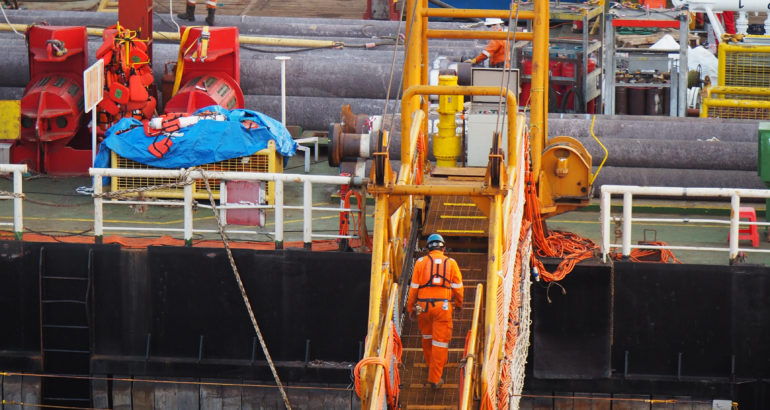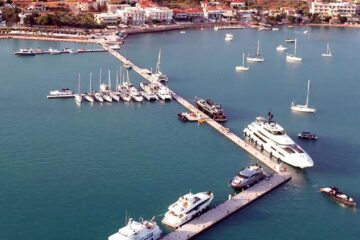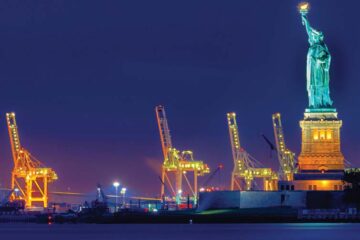The marine construction industry is booming in the US. Ports are expanding and infrastructure is being updated to adjust to the changing times. Plus a growing recreational boating population is prompting marinas to expand their footprint to accommodate bigger yachts and other pleasure craft. However, this is only part of the story.
Marine contractors’ expertise and skill are demand for small construction and maintenance jobs across the United States. When construction is in or near water, it very likely involves specialized marine contractors whose knowledge and experience are invaluable. Marine contractors are tasked with performing some very risky work; therefore, protecting their property and assets requires considerable attention to managing on-the-job exposures.
Water, Waves and Weather
Marine contracting is not for the faint of heart. It ranks up there as one of the most hazardous occupations in the workforce. Just consider a marine contractor’s environment. Working on or near water poses more slip or fall risk. Contractors can be swept off their feet by wave action, tide action, strong currents or swell from passing water traffic. And these conditions can change quickly, especially when adverse weather kicks in, increasing dangers that maritime construction workers face daily.
According to the US Bureau of Labor Statistics, data collected from 2011-2015 revealed that the most injuries in the marine construction industry resulted from:
- Overexertion
- Slips, Trips and Fall
- Contact with Objects or Equipment
- Transportation incidents
Fortunately, OSHA offers guidance to help marine contractors address and minimize some of these workplace exposures. Operating heavy equipment on land can be challenging enough. Operating large heavy equipment, often on workboats and swaying with a waterway’s current, has its own unique risks.
Sharing the Waterways
Another risk for marine contractors is third party liability. Their operations share the waterways with a growing volume of vessels. Marine contractors’ vessels are restricted in their navigation because of the work they perform, often working at a fixed location, such as a bridge. The exposure to collision while working around the clock, especially at night, is significant. Proper lighting assures they are seen.
Tight on Talent
Only a few years ago, the whole construction industry was in a slump. As a result, many left the construction industry to pursue other fields. This resulted in a shortage of skilled workers, which has been exacerbated by recent rebuilding efforts after like Hurricanes Harvey, Irma and Maria.
Given the specialized work performed by marine contractors, the strain of the talent shortage is even greater. This is a top risk management concern. A shrinking workforce translates to severe gaps in experience. Inexperience poses significant risk, especially in the challenging marine work environment.
Inclusive Insurance
Given the hazardous working conditions and the unique equipment, insurance protection is essential. It must directly address the diverse, day-to-day exposures marine contractors face. Contractors’ insurance is often consists of such coverages as:
- Marine General Liability includes coverage for products and operations liability for work performed from watercraft.
- Marine Contractors’ Liability provides coverage for property damage to marine structures.
- Commercial Hull and Protection & Indemnity (P&I) protect vessel owners against physical damage to the ship and legal liability.
- Bumbershoot (umbrella) provides excess liability coverage for companies with major marine exposures. Such policies cover both non-marine and maritime liability exposures—that is, protection and indemnity, general average, collision, general liability hazards, among others.
- Builder’s Risk and Installations includes materials, labor and reasonable overhead and profit
- Contractor’s Equipment provides broad coverage including waterborne coverage
- Property includes insurance for buildings, contents, and business interruption
- Auto can also be packaged with the marine contractors program
In many instances, coverages are packaged together to streamline the insurance buying process, as well as to eliminate possible conflicts in coverage.
No marine contracting business is exactly the same. That’s why working with an insurer with a long track record in the marine industry can significantly impact the effectiveness of a contractor’s coverage. Marine underwriters are a rare breed. Insurers with a long history in the marine market pride themselves on building teams of underwriters who understand the nuances of marine contracting operations.









